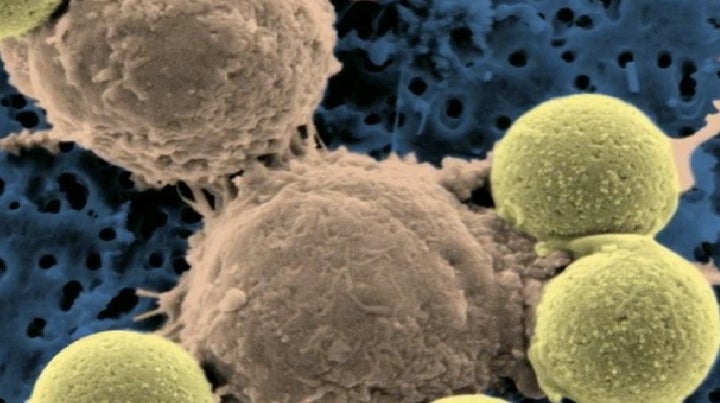
A new leukemia treatment is wowing even the researchers behind its creation, providing results beyond their wildest expectations.
It's virtually eradicated cancerous leukemia cells in the first three patients it's been tested on.
In two of the first three patients the process was tested on the treatment completely destroyed the most common type of leukemia, according to MSNBC. In the third patient, the treatment seems to have reduced the cancerous cells to 70 percent of what they once were.
"Within three weeks, the tumors had been blown away, in a way that was much more violent than we ever expected," said senior author Carl June, MD told Penn Medicine.
Amazingly, the breakthrough actually uses patients' own T cells to fight the cancer, according to the University of Pennsylvania's news release. Researchers took the T cells of the patients, ran them through Penn's vaccine production facility, and then reintroduced them to the patients' bodies following chemotherapy.
In more scientific terms, from Penn Medicine:
After removing the patients' cells, the team reprogrammed them to attack tumor cells by genetically modifying them using a lentivirus vector. The vector encodes an antibody-like protein, called a chimeric antigen receptor (CAR), which is expressed on the surface of the T cells and designed to bind to a protein called CD19.
Once the T cells start expressing the CAR, they focus all of their killing activity on cells that express CD19, which includes CLL tumor cells and normal B cells. All of the other cells in the patient that do not express CD19 are ignored by the modified T cells, which limits side effects typically experienced during standard therapies.
The result was a very, very effect means of treatment that showed very positive results within 28 days. "In addition to an extensive capacity for self-replication, the infused T cells are serial killers. On average, each infused T cell led to the killing of thousands of tumor cells – and overall, destroyed at least two pounds of tumor in each patient," June told Penn.
Those who took part in the study were nearly out of options before the treatment. The news release states that short of a bone marrow transplant (which carries at lest a 20 percent mortality risk and only 50 percent chance of recovery) none of these patients had alternative medical options.
The next step for scientists is to test the treatment on different types of leukemia. In the future, the process may be modified to target other types of tumors, including non-Hodgkin's lymphoma and acute lymphocytic leukemia.
Amazingly, MSNBC reports that this radical treatment almost never happened. Funding for the experiment was apparently hard to find, and is one reason the treatment has only been tried on three patients.
From MSNBC:
Both the National Cancer Institute and several pharmaceutical companies declined to pay for the research. Neither applicants nor funders discuss the reasons an application is turned down. But good guesses are the general shortage of funds and the concept tried in this experiment was too novel and, thus, too risky for consideration.
With promising results like this, it's hard to imagine how it could be so hard to get funding.
WATCH (Details of the study, via UPENN):